KRA-Week 2013-4: Peter Warzynski & Leicester
Links: King Richard Week 2013 & Quiz
♕ ♛ ♕
Interview with journalist Peter Warzynski
about
Leicester & Archaeology & King Richard III
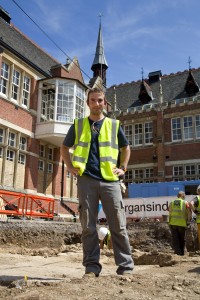
Peter Warzynski, Leicester Mercury – at the digging site where King Richard III was found. 7/2013 (Source: Peter Warzynski)
After yesterday’s interview with author Matthew Lewis, today we have an interview with journalist
Peter Warzynski from Leicester.
For all who follow the news about King Richard III here, he will not be a stranger.
Peter Warzynski is the knowledgeable reporter with the reliable news and information about Leicester and everything King Richard III. If the general news reports are vague about a topic, go find his article on the matter and you will certainly find the background and information you are searching for.
So I was very curious when Peter Warzynski wrote about his first hand experiences during the second digging at the location of the Greyfriars’ Church in Leicester in July 2013, and – surely not a daily occurrence for a journalist – I asked him for an interview, which he kindly granted.
The article in the Leicester Mercury with a fantastic picture of the digging area and his exact spot of research:
Leicester Mercury: Richard III dig: The hidden secrets of historic friary (20.07.2013)
And the description of his experiences during the archaeological research:
Leicester Mercury: Richard III dig: My brush with urban archaeology (22.07.2013)
With Peter Warzynski, I hardly could stop myself asking him questions. He is so knowledgeable about Leicester, has first hand experience about the digging, the location and the town.
Now, I hope you will enjoy the interview as much as I did while getting all my curious questions answered:
♛
Can you tell us a bit about yourself, your background as a journalist and your connection to Leicester?
I was born in Leicester, in the city, just a few miles from the car park where they found the remains of Richard III.
I’ve been a journalist for about eight years, starting at BBC Radio Leicester and moving to the Leicester Mercury about five years ago. I now live in Wigston, about five-miles outside of the city centre.
What is your impression about how the people of Leicester feel about the discovery and King Richard III himself?
I haven’t heard anything negative about the discovery from people in Leicester. Everyone is over-the-moon that we have a king buried in our city… and they’re even more excited about the fact that he will be reinterred at the Cathedral next year. Hopefully. The legal battle for the remains could push things back, but if the High Court sees sense it will make its decision quickly and the reburial can go ahead as planned.
The influence of Richard III in Leicester and Leicestershire is huge. We have the annual Battle of Bosworth re-enactment, we have roads, towns, schools and places named after him. We have statues, monuments and plaques dedicated to him. And we are in the process of building a museum in his honour.
How is the influx of visitors generally seen for / in the town?
Tourism is not our greatest industry, but we do fairly well.
Saying that, since the discovery of Richard III, it has boomed – and you can see that people are jumping on the bandwagon and using the king to promote their shops.
Advertising for local businesses suddenly has a Richard III theme and tour operators are offering packages to holiday makers which include all of the Richard III related sites.
More than 100,000 people have visited a small, temporary exhibition at the Leicester Guildhall, in the last few months. They have travelled from America, Australia, Asia in their droves and queued for hours to see the humble exhibition.
Next year a £4m permanent visitor centre will open, which will feature the grave of Richard III and is expected to attract millions of tourists.
It remains to be seen how long the initial explosion of excitement will last, but judging on how well people have taken to it, I think it’ll be a sound investment.
It had always been clear that King Richard III had been buried in Leicester after the Battle of Bosworth, but what does the knowledge that he indeed is there and finally found change for Leicester?
I don’t think it has always been clear. There was evidence to suggest he was buried by the Grey Friars, but where exactly that was has been a mystery for years.
Granted there was evidence to show that he was at the friary, but then again there was conflicting accounts to say he was elsewhere.
One of the main changes, now we know we have his bones, is the way Richard’s story is taught in school. Until the bones were identified, people still argued that his remains were dug up at some point in the past and thrown into the River Soar. That myth has now been quashed.
There is still quite a bitter debate over who identified the real location of the grave since the Greyfriars dig.
John Ashdown-Hill, who tracked down Michael Ibsen – Richard III’s 16th great grandnephew – claims he pinpointed the grave first.
However, the University of Leicester says that one their own – a lovely chap named David Baldwin – was the first person to positively identify the final resting place of the Plantagenet monarch.
Were you interested in King Richard III and his story before the digging in Leicester began?
Everyone in Leicester knows about the story of Richard III because he has had such a big influence on the city and the county.
As I mentioned before, the Battle of Bosworth is re-enacted every year. (In fact, this year, a German (Bavarian) man by the name of Andreas Wenzel will play the role of Richard at the anniversary re-enactment.)
So all Leicestershire folk have an interest in the former King – everyone I know has read Shakespeare’s imagining of him at school at some point.
I have an interest in history anyway, so this is very much up my alley (so to speak), and I the fact that history is playing itself out on my doorstep is fantastic. I also hope it will inspire others to become interested in history too.
King Richard III, though dead for over 500 years by now, still awakens great emotions, varying from hatred to support and loyalty. What do you think might be the reason for this heated debate about him, when other royals or historical figures can expect a more ‘neutral’ research into their life after such a long time?
Richard has polarised people for hundreds of years because nobody really knows what he was like. Or at least nobody knows the complete truth. There have been so many conflicting accounts written about him, it is impossible to determine what the man was truly like.
Did he murder the Princes in the Tower? Did he die bravely in the thickest press of his enemies? There’s nothing to sat he did both – or neither. This is the problem with trying to establish his character.
I believe that Richard ruled and acted like a typical medieval monarch. As far as people of the time were concerned, he was a conventional king.
I think that because very little is known about him, and due to a war of slander and deformation with Henry VII, what people think they know is shrouded in uncertainty – and it is very easy people to pick and choose what they believe and discount the pieces of history that don’t fit with their image of him.
The problem with my point-of-view of Richard is that by sitting on the fence I manage to alienate both the supporters and detractors with my boring uncommitted open-mindedness.
What did King Richard III and discovering his remains in Leicester change in your life?
Has your attitude / awareness for Richard III in your town (city) changed since the beginning of the digging? Was the digging you could join able to change your perception / perspective?
The discovery has changed the way I view archaeology.
I worked with the University of Leicester dig team on the second Greyfriars excavation, which finished a few weeks ago. It was at the same site and the grave of Richard was still visible – but this time the team was looking for more information about the friary itself.
The experience was like a roller coaster – one minute I was laboriously brushing the dust from the 50th broken tile I had found, daydreaming about what I was going to have for dinner that night. The next I was lifting the lid from a 600-year-old stone coffin to reveal what everybody thought would be a medieval knight, or the founder of the friary. I say ‘thought’, because what we actually found was a second lead coffin inside the stone tomb – a surprise for everybody, even experienced site director, Mat Morris – who found Richard a year ago.
After taking part in the dig, I realised just how unbelievably unfathomable it had been that the team had stumbled upon Richard’s grave the way they did.
When I spoke to Richard Buckley – who led the project – on the first day of the original Greyfriars dig in August 2012, he said he would eat his hat if they found anything. He was convinced the best the team would do is find part of the medieval friary – maybe the church.
So it goes to show how unexpected the find was.
Were you interested in archaeology before King Richard III was searched and found? If yes, why and how did you get information, what interested you?
What interests you now, after you have experienced a digging yourself?
I was interested in archaeology the same way most people are interested. I like books and documentaries about Egyptian tombs and Mayan ruins – not city centre digs.
Now, however, I think there’s something to be said for urban archaeology.
Since the discovery of Richard III, I have written a few more stories for the newspaper about other digs in Leicester – not connected with the Greyfriars – and I’ve learned a lot about the history of the city – who founded it, how the first settlers lived, when the Romans moved in, when the Romans moved out and how Leicester grew.
Digging so close where King Richard III was found, what aspect was more important to you. To get more knowledge about archaeology in general, about the history of your town or possibly about a famous king, who had gone missing some hundred years past?
I think all three tie in together. The more I found out about archaeology through working with the team, interviewing the archaeologists and reading about the project, the more I understood how amazing the story of Richard III was.
The University of Leicester maths department calculated that the odds of finding the remains was less than one per cent.
When you learn that only 17 per cent of the friary is not buried beneath buildings, walls or roads – that in itself is amazing.
If Richard had been interred anywhere else in the remain 83 per cent of the friary – which is unreachable – he would never have been found.
How important was the factor of good weather for your digging? What influence did it have on your results and speed of your digging?
It didn’t really have that much of an impact. The sun dried out the earth which made it difficult to photograph and catalogue because of the dust – it settled everywhere and made the whole place one uniform colour. It meant that details on stonework and tiles were indistinguishable from other nondescript areas. So before every photo was taken the whole site had to be hosed down and watered to bring out the detail and colour of the archaeology.
What methods did you see and were allowed to do yourself during the dig?
The dig process was mostly a meticulous one. First the heavy machines come in and remove the Tarmac and top soil. Then the archaeologists take over once they feel they’re close to the archaeology. My role involved using mattock – a type of pick – to carefully remove layers of soil and then once I’d come across something of interest – which mainly turned out to be medieval floor tiles – I would use a trowel and brush.
However, like I mentioned before I was also there when the stone coffin of Sir William de Moton (although it could be a number of other likely candidates) was unearthed, which was very exciting.
When we removed the stone lid, everyone expected to see a skeleton. But what we found was a second lead coffin inside, which is now at the university undergoing analysis.
In what aspects was archaeology more difficult and harder or easier than you expected?
Did the archaeological research and the used methods meet your expectations?
There’s a lot of manual labour involved. Shifting large wheelbarrows full of soil and debris from the excavation site.
One minute you’re heaving big clumps of dirt from the earth, and the next your being very careful because you’ve found ‘something’ which might be very interesting – and you have to change tact and be very gentle.
Anyone can do the bits I did. The hard part comes when you have to identify what it is you’re digging – and knowing when to stop smashing the ground with the mattock and use you trowel instead. Luckily, I was working with an experienced archaeologist the whole time – and I was probably asking very stupid questions.
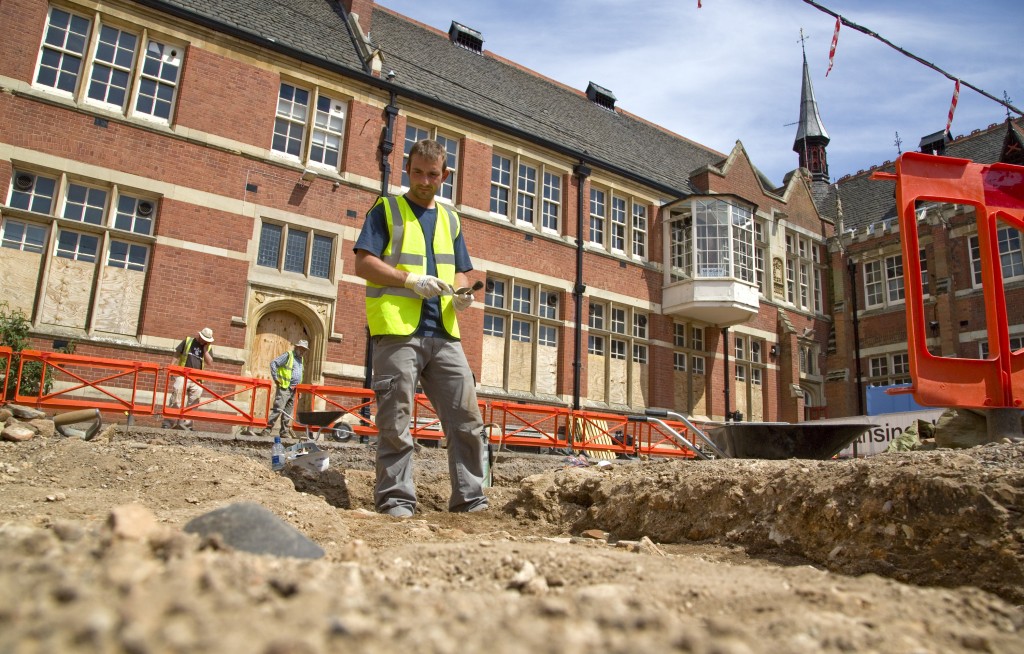
Peter Warzynski, Leicester Mercury – at the digging site where King Richard III was found. 7/2013 (Source: Peter Warzynski)
Your trench 4 looks rather level and not very deep, compared to some other trenches. Was this because of the richness of tiles already preserved in this upper soil section or did you later go deeper as well in a presumption that the area might have been filled in with debris from the destroyed monastery?
That was the top of the trench. Once the tiles had been catalogued and photographed we smashed right through them and continued deeper down. I was a bit taken aback by this. I thought we should be preserving them and removing them from the ground for storage.
However, it was explained to me that if the archaeologists did that with everything they found, especially the hundreds of broken tiles, they would soon run out of room to store them. They told me that the only way of finding out what was buried below their feet was to dig down, record what they had found and keep going. Much of the archaeology they came across was unceremoniously hacked through once it had been recorded.
This is the way it has always been, ever since the first archaeologist picked up a mattock.
Your trench looks very close to the grave of King Richard III. Can you tell us more about the placement of this section in the presumed church layout?
What area did you reveal in comparison to the location of where the grave of King Richard III was situated? Had you hoped to find something with significance to King Richard III in the church?
The site that was being excavated was the choir of the church. A place where only the friars could go.
It was reserved for high status burials and the team actually uncovered – but did not exhume – a number of other remains during both digs.
It faces east to west, as is the tradition with churches, and included a presbytery – where the stone coffin was unearthed. To the north was the friary’s graveyard, which extends under the neighbouring building and the road which separates the site from the Cathedral (where Richard will be reinterred next year).
The second dig was not aimed at finding anything else directly related to Richard III. Historical records say that Henry paid for an alabaster tomb for Richard, but that was never found. It would have been interesting that had been uncovered.
The second dig was aimed at finding out more about the friary itself.
Might King Richard III have been able to make archaeology more popular?
Will superficial observers now, after King Richard III was found so quickly, think archaeology is a fast method? What impression did you get?
The way Richard III was found is certainly not common in archaeology. Archaeologists do not look for specific people – that is very rare. What archaeologists do is dig and see what they find. To go out with the specific intention of finding a particular person is almost unheard of, which is what makes this story even more fascinating.
So, with that in mind, this project might give people the wrong impression about archaeology.
The discovery has also kick started media speculation about other English kings and their presumed whereabouts, and there have been stories in the newspapers about searching for Alfred the Great.
I suppose people might think that archaeology is fast and easy after following Richard’s story. After all the team found him on the morning of the first day of the dig, in the first place they looked, in the first trench that they dug.
Will you attend the burial ceremony of King Richard III next year? What are you looking forward to most? What aspect of the ceremony do you think especially reflects on the person of King Richard III? What aspects do you think – as far as they are known so far – are more to appease contemporary sensibilities rather than King Richard III?
I will definitely be at the reinterment ceremony next year to report on the event, speaking to visitors from far-flung lands and enjoying the occasion for myself. I can’t wait. I’m also working with the cathedral on the plans at the minute, and I’ve been sworn to secrecy regarding the details of the service. Although, they haven’t really told me that much – I think they are still quite distrustful of the press.
The cathedral is not used to this kind of media attention (unlike the university and the city council) and I think it feels slightly uncomfortable.
Despite the judicial review into the exhumation licence, I still think Leicester will be the location of the reinterment. So I’m not worried about York snatching the bones from under our nose.
They could be famous last words, but common sense, and the law is on Leicester’s side. The spurious claims of the Plantagenet Alliance – that they are in some way related to the king – will be shot down within seconds. Richard III has millions of relatives in the UK, with an equal right to the remains.
The fact is, after 500-years, almost everyone in England who can trace their family tree back to the 15th century will find some link to Richard.
This is why the High Court judge, Mr Justice Haddon-Cave, has agreed to hear the case, because he says the country should decide. But then by allowing the debate he’s giving priority to what will only amount to an argument, rather than to the law – which the University of Leicester followed to the letter when they applied for the exhumation licence.
Whom would you invite to attend the burial ceremony, if invitations were left in your hands?
I do think there should be a member of the Royal Family there.
What is your impression of King Richard III now, after all your experiences and your intense occupation with the research? What is your impression now, in comparison with what it was before the search in Leicester even begun?
There has been a lot written about how he has been misrepresented throughout history. I think the argument that he wasn’t as bad as people say does have its merits, but I still think he would have behaved like a monarch of the time – and that means he may not have been a complete angel either.
But whatever kind of king he was, he was buried in Leicester… and Leicester is where he should stay.
♛
Now I am certain you see, why I had such a hard time to stop myself from asking questions from my interview partners.
I hope you enjoyed both interviews with Peter Warzynski and yesterday’s with author Matthew Lewis.
More articles and interviews will follow in the next days.
Don’t forget to take part in the Quiz till the 27th at midnight to have a chance to win!
(Though it starts with questions about actor Richard Armitage, most questions are about King Richard III !
So it is not only for RA-experts, but for history buffs as well!)
Links: King Richard Week 2013 & Quiz
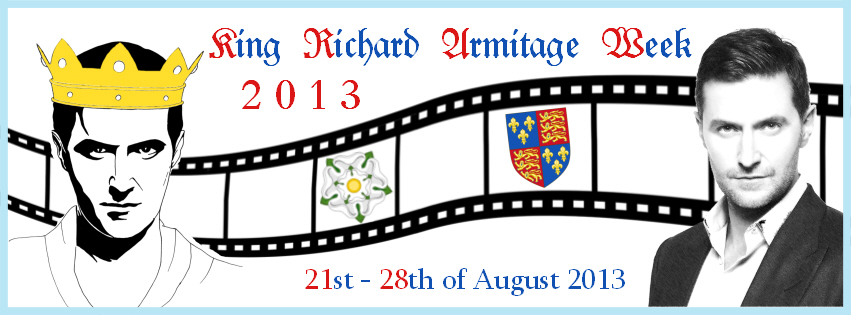


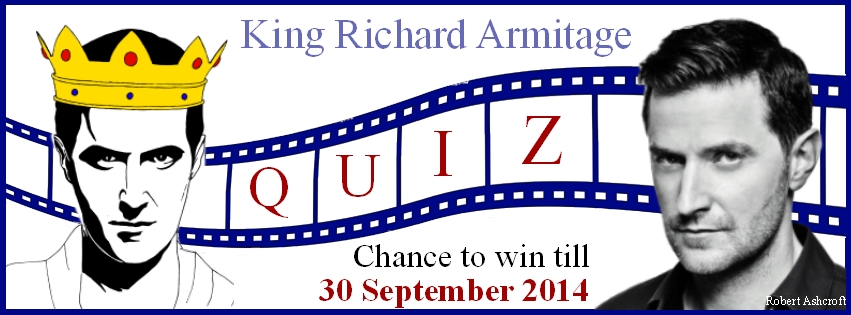
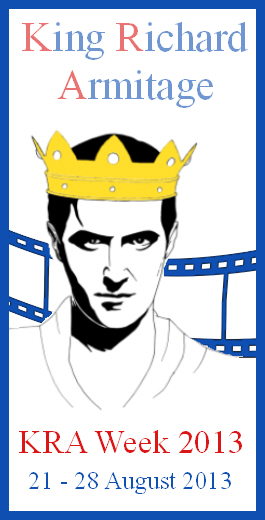
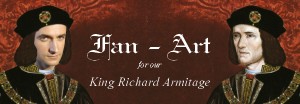
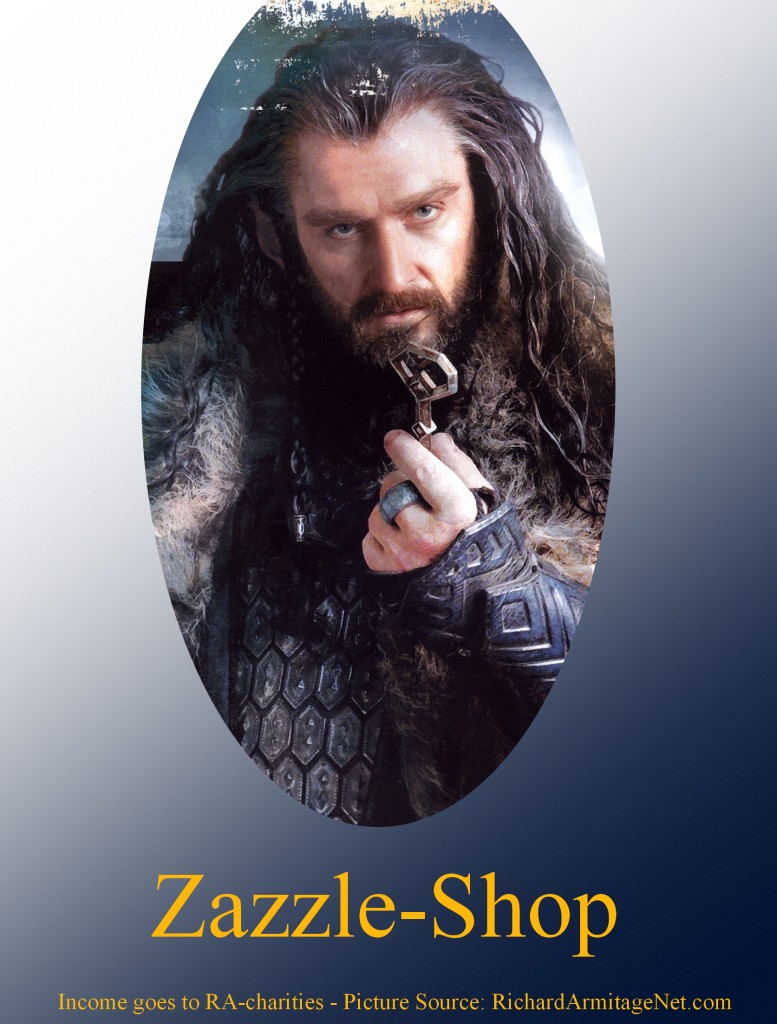
Pingback: KRA-Week 2013-8: Quiz-Price & Historical Music The Orpheus ... - musicBlogs
Pingback: Modern Form of Battle – Petitions | King Richard Armitage
Pingback: Celebrating 2.000 Signatures | King Richard Armitage
Pingback: King Richard III in Print | King Richard Armitage